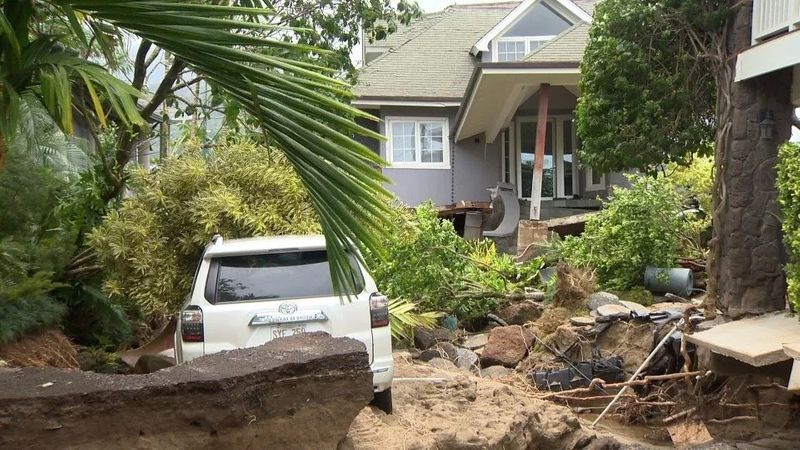As hurricane season starts, past disasters offer glimpse of warmer future
 In April 2008, a winter storm with record-breaking rainfall destroyed or damaged a number of homes and cars on Kaua‘i. Image courtesy of Hawaii News Now.
In April 2008, a winter storm with record-breaking rainfall destroyed or damaged a number of homes and cars on Kaua‘i. Image courtesy of Hawaii News Now.Hurricane season officially begins Friday. Forecasters say the Central Pacific could see three to six tropical cyclones that would bring torrential rains, strong winds and severe flooding. This all comes as the state is still recovering from a record-breaking winter storm that pummeled parts of O‘ahu and Kaua‘i in April.
Heavy rains triggered floods and mudslides that made major roads inaccessible, destroyed and stranded cars, and ripped homes from their foundations. Some 532 homes were damaged or destroyed in the event, and the amount of rainfall — nearly 50 inches in a 24-hour period — could break a national record if verified. UPDATE 09-06-19: NOAA’s National Climate Extremes Committee (NCEC) has confirmed the 24-hour rainfall of 49.69 inches at Waipā Garden on Kaua‘i on 14–15 April 2018, a new US record. (Pao-Shin Chu, professor of Atmospheric Sciences and Hawai‘i State Climatologist, is one of the three members on the NCEC.)
Experts say the image of cars under water and homes toppled over serves as an important reminder for what the islands could see more of by the end of the century as a result of climate change: more storms and more intense storms that might not only happen more regularly, but could become the norm.
“It’s very gradual, and just because we had a record-breaking event doesn’t mean next year we’re going to have that again,” said Steven Businger, professor and chair of the Department of Atmospheric Sciences (ATMO). “But the state will have more record floods in the future.”
Yuqing Wang, professor of Atmospheric Sciences and International Pacific Research Center (IPRC) researcher, adds that it was an event triggered primarily by La Niña. But the cold air mixed with the warmer sea surface temperature resulted in an unstable atmosphere. “They bring such extreme events because the sea surface temperature is really high around Hawai‘i,” he said. “About 2 degrees higher than normal.”
Watch the video report and read more about it at Hawaii News Now.



